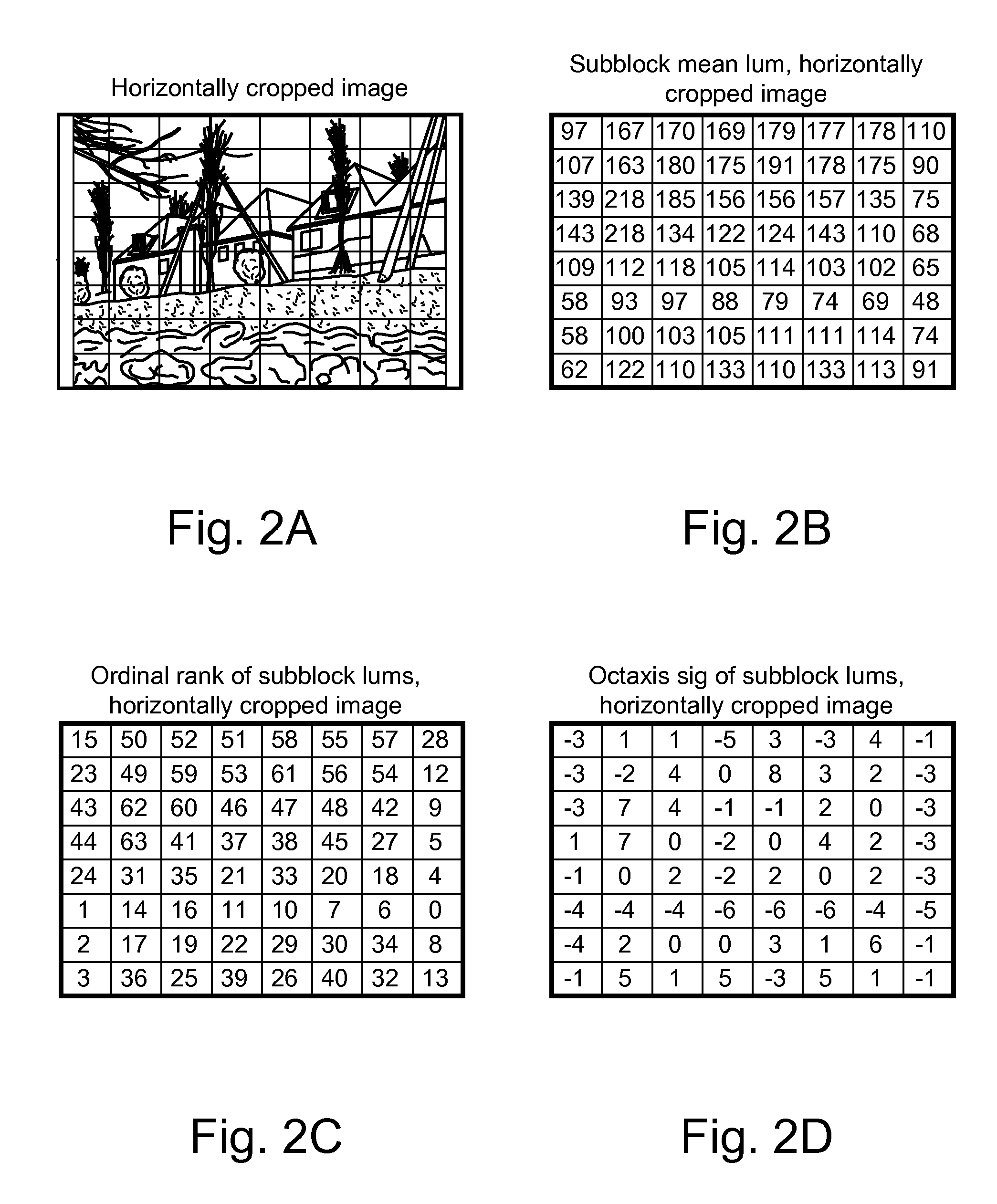Robust signatures derived from local nonlinear filters
a local nonlinear filter and robust signature technology, applied in the field of signal processing, can solve the problems of ordinal signatures and differential signatures being sensitive to geometric transformations, and ordinal signatures are susceptible to any change in image, and achieve the effect of greater robustness
- Summary
- Abstract
- Description
- Claims
- Application Information
AI Technical Summary
Benefits of technology
Problems solved by technology
Method used
Image
Examples
Embodiment Construction
[0032]The following description provides examples of non-linear multi-axis filters used to characterize content signals for identification, recognition, etc. This class of filters operates by comparing a sample with its neighbors to compute comparison values, combining the comparison values to compute a filtered value, and then replacing the sample with the filtered value. The comparison value can be a difference value between the sample and neighbor value or a quantized difference value (bi-level such as 1, −1 or multiple level quantization). The combination of the comparisons can be a sum or weighted sum, etc. of the comparison values. These filters operate on sample values of content signals in the spatial, time, spatio-temporal or transform domain (e.g., the compressed domain, frequency domain, or some other transform of the time, space or time-space values). As explained further, the filter output signal can be further quantized, sorted, organized into a vector or linked list d...
PUM
 Login to View More
Login to View More Abstract
Description
Claims
Application Information
 Login to View More
Login to View More - R&D
- Intellectual Property
- Life Sciences
- Materials
- Tech Scout
- Unparalleled Data Quality
- Higher Quality Content
- 60% Fewer Hallucinations
Browse by: Latest US Patents, China's latest patents, Technical Efficacy Thesaurus, Application Domain, Technology Topic, Popular Technical Reports.
© 2025 PatSnap. All rights reserved.Legal|Privacy policy|Modern Slavery Act Transparency Statement|Sitemap|About US| Contact US: help@patsnap.com



